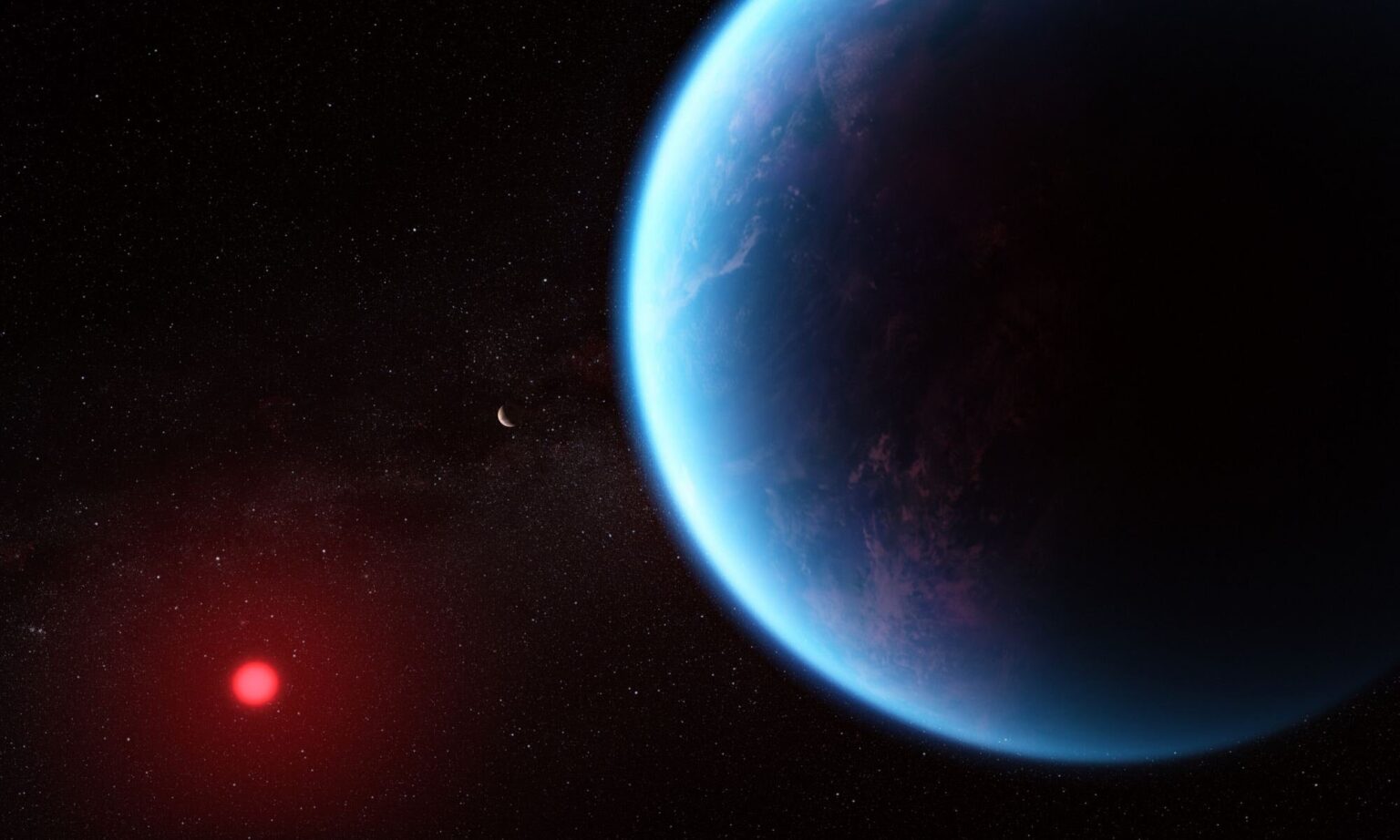Several groups of scientists are trying to understand what the exoplanet K2-18b is. New research carried out using the James Webb Space Telescope shows that it may turn out to be a mini-Neptune.

Mysterious exoplanet
Exoplanet K2-18b has long attracted the attention of scientists. Spectroscopy of the James Webb Space Telescope has shown that there is carbon and methane in its atmosphere. And the estimated size of the planet shows that it can be a super-Earth completely covered with water, a kind of “oceanic world”, but new research calls this conclusion into question.
K2-18b is located in the habitable zone of the red dwarf, which is 134 light-years away. The size of the planet is approximately 2.6 Earth radii, and the mass is about 8.6 Earth masses. Its orbital period is only 33 days, so it is very close to its mother star. But because the star is a dim red dwarf, the planet receives about the same amount of energy from its star as the Earth receives from the Sun.
Scientists are still puzzled over what the planet is like. Its density is somewhere in the middle between Earth and Neptune. It is neither a rock nor a gas. And this is what led scientists to assume that it is an oceanic world. However, the only way scientists can definitively determine what K2-18b is made of is spectroscopy.
James Webb Telescope Research
That’s exactly what the James Webb Telescope did. It detected methane (CH4) and carbon dioxide (CO2) in the atmosphere of K2-18b, and also did not detect ammonia. These results tend to indicate an oceanic world with a thick hydrogen-helium atmosphere. However, another analysis revealed the opposite. According to it, the planet is a magmatic world.
To overcome these contradictions, the researchers used photochemical and climate models to simulate various versions of K2-18b, including oceanic worlds and a gas-rich mini-Neptune without a solid surface. Their work shows that the model of the small gas giant best matches the data.
Atmosphere of the planet K2-18b
The atmospheres of planets are extremely complex, and figuring out what’s going on at such a great distance is an extremely difficult task. Scientists need not only to know what chemicals are present, but also to understand all the processes taking place. The temperature and pressure in the atmosphere play a huge role in what we can see and what can remain hidden.
One aspect of the K2-18b atmosphere is supercritical. A supercritical fluid is a liquid with a temperature and pressure exceeding a critical point. There is no gas or liquid phase above this critical point. But the pressure is not high enough to force the material to turn into a solid. Jupiter and Saturn have supercritical fluids deep in the atmosphere, and they behave very differently from ordinary liquids or gases.
This adds another layer of complexity. They point to the deep layers of the planet’s atmosphere to explain the telescope’s findings. Thermochemical quenching in the deep layers of the atmosphere can explain the presence of methane and carbon dioxide, and the kinetics of the deep atmosphere, for example, upwelling, can explain the absence of ammonia and carbon monoxide
This is not the last word about the K2-18b. In the future, the data will be subjected to a more in-depth analysis. As efforts to understand this phenomenon continue, the results will also strengthen our current atmospheric and climate models.
According to phys.org
Follow us on Twitter to get the most interesting space news in time
https://twitter.com/ust_magazi


